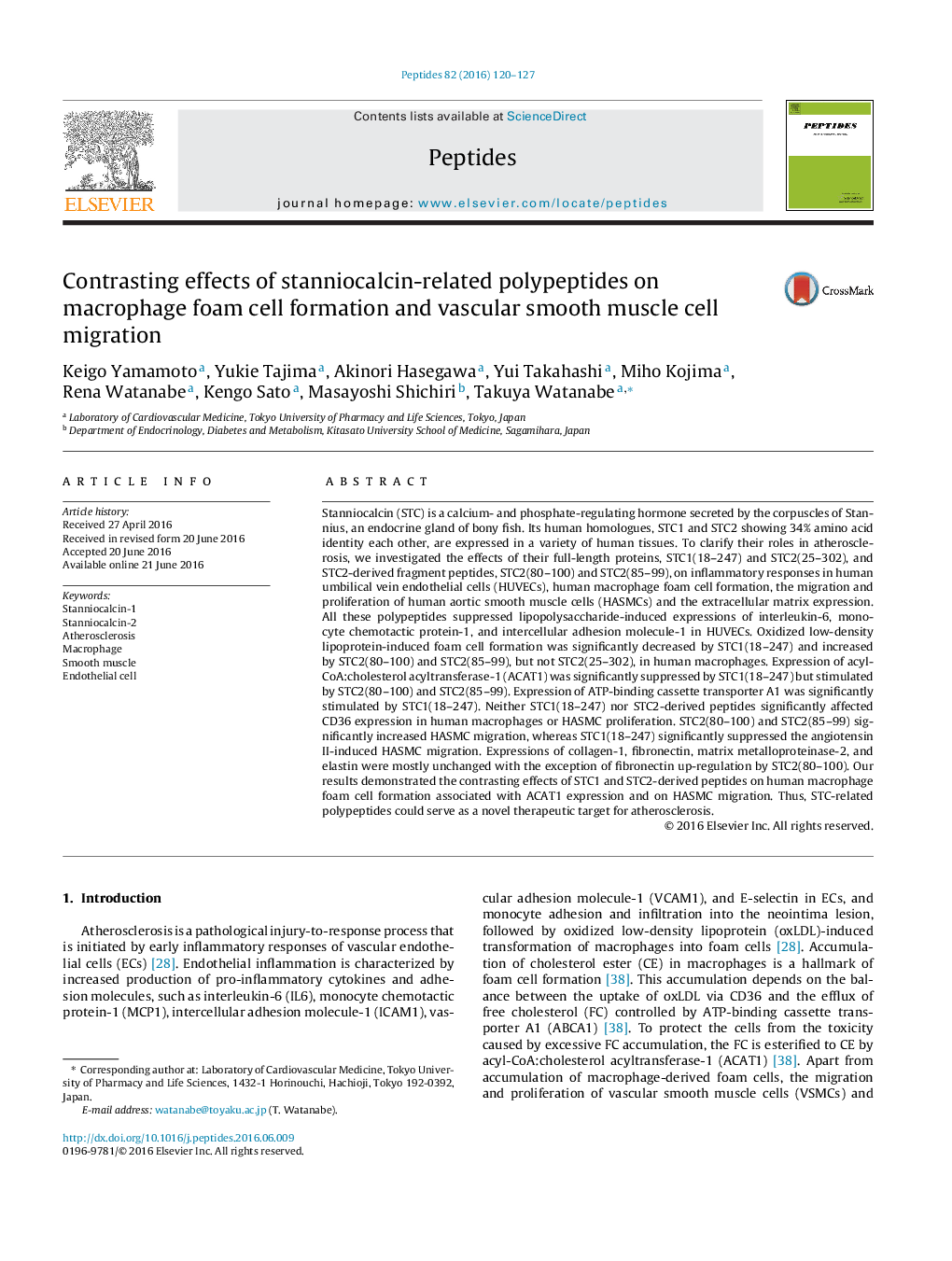| کد مقاله | کد نشریه | سال انتشار | مقاله انگلیسی | نسخه تمام متن |
|---|---|---|---|---|
| 2005782 | 1541697 | 2016 | 8 صفحه PDF | دانلود رایگان |
• This study is the first to demonstrate the opposite effects of stanniocalcin-related polypeptides on atherosclerosis.
• Stanniocalcin-1 suppresses endothelial inflammation, macrophage foam cell formation, and smooth muscle cell migration.
• Stanniocalcin-2-derived polypeptides stimulate macrophage foam cell formation and smooth muscle cell migration.
Stanniocalcin (STC) is a calcium- and phosphate-regulating hormone secreted by the corpuscles of Stannius, an endocrine gland of bony fish. Its human homologues, STC1 and STC2 showing 34% amino acid identity each other, are expressed in a variety of human tissues. To clarify their roles in atherosclerosis, we investigated the effects of their full-length proteins, STC1(18–247) and STC2(25–302), and STC2-derived fragment peptides, STC2(80–100) and STC2(85–99), on inflammatory responses in human umbilical vein endothelial cells (HUVECs), human macrophage foam cell formation, the migration and proliferation of human aortic smooth muscle cells (HASMCs) and the extracellular matrix expression. All these polypeptides suppressed lipopolysaccharide-induced expressions of interleukin-6, monocyte chemotactic protein-1, and intercellular adhesion molecule-1 in HUVECs. Oxidized low-density lipoprotein-induced foam cell formation was significantly decreased by STC1(18–247) and increased by STC2(80–100) and STC2(85–99), but not STC2(25–302), in human macrophages. Expression of acyl-CoA:cholesterol acyltransferase-1 (ACAT1) was significantly suppressed by STC1(18–247) but stimulated by STC2(80–100) and STC2(85–99). Expression of ATP-binding cassette transporter A1 was significantly stimulated by STC1(18–247). Neither STC1(18–247) nor STC2-derived peptides significantly affected CD36 expression in human macrophages or HASMC proliferation. STC2(80–100) and STC2(85–99) significantly increased HASMC migration, whereas STC1(18–247) significantly suppressed the angiotensin II-induced HASMC migration. Expressions of collagen-1, fibronectin, matrix metalloproteinase-2, and elastin were mostly unchanged with the exception of fibronectin up-regulation by STC2(80–100). Our results demonstrated the contrasting effects of STC1 and STC2-derived peptides on human macrophage foam cell formation associated with ACAT1 expression and on HASMC migration. Thus, STC-related polypeptides could serve as a novel therapeutic target for atherosclerosis.
Journal: Peptides - Volume 82, August 2016, Pages 120–127
